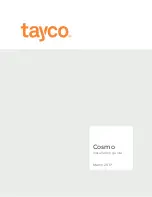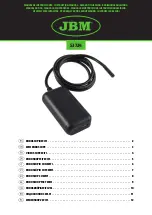
86
If the device indicates that charging is over, it is perfectly acceptable to disconnect the charger for a few seconds, then reconnect
it to top up the charge.
Like any rechargeable battery, the one in your device is subject to significant spontaneous discharging, even when the device is
off. If your device has not been used for several weeks, it is probable that the battery will be partially discharged, even if it had
been fully recharged just before going into storage.
In this case, before using it again, you should fully recharge the battery (at least 7 hours).
The longer your battery is stored, the more it is discharged. After three months’ storage of the battery without periodic recharging,
the battery is probably fully discharged.
Possible consequences are:
The device fails to start unless supplied by the external charger.
The device loses the date and time (it returns to the 1st of January 1998).
8.5.3. oPtIMIZE bAttERy CHARGInG
During charging, the temperature of the battery rises substantially, especially towards the end. A safety device, built into the bat-
tery, checks constantly that the battery temperature does not exceed an acceptable maximum. If this maximum is exceeded, the
charger switches off automatically, even if charging is not complete.
The battery is at the bottom of the device, and the evacuation of the heat can be facilitated by placing the device upright while
charging. The battery temperature is then lower and it will be charged more fully.
This precaution is especially important when the air temperature is high (in summer).
8.5.4. lIfE bEtwEEn CHARGEs
The mean battery life depends on the type of measurement and on how the device is used. Approximately:
16 h if the automatic switching off function is deactivated,
24 h if the automatic switching off function is activated,
How long your device can operate when the battery is fully charged depends on several factors:
The consumption of the device, which depends on the measurements you make,
The capacity of the battery. It is greatest when the battery is new, and declines as the battery ages.
Here are a few ways to extend battery life between charges:
Use the back-lighting only when it is strictly necessary,
Set the brightness of the back-lighting to the lowest level at which you can still read the display unit,
Use the back-lighting only as long as you must (see SET-UP, § 5),
Program the shortest time to automatic switching off you are comfortable with (see SET-UP, § 5),
Use the pulse mode for continuity measurements at 200 mA,
If the continuity measurement at 200 mA is made in permanent mode, do not let the measurement leads touch each other
when you are not making a measurement,
When making insulation measurements at high test voltages, stop pressing the TEST key when the measurement is over.
8.5.5. “bAttERy REACtIvAtIon” MEssAGE
When a battery is deeply discharged or its storage temperature is low, the charger may execute a prior battery reactivation cy-
cle. That means that the charger applies a slow charge until the battery reaches either a minimum temperature threshold or a
minimum charge threshold.
If the battery is in good condition, this reactivation stage ends after about 45 mn and the charger switches over to fast charging.
If, however, the maximum time allowed for the qualification stage is exceeded, the device declares the battery defective and
displays a message on the screen of the measuring device.
In this case, we recommend proceeding as follows:
Remove the battery compartment cover (voir §10.2),
Disconnect the battery connector,
Wait approximately 10 seconds,
Reconnect the battery connector to the device,
Put the battery compartment cover back in place,
Charge the battery once more.
Содержание C.A 6116
Страница 1: ...C A6116 Installation TESTER E N G L I S H User s manual...
Страница 95: ...95...











































